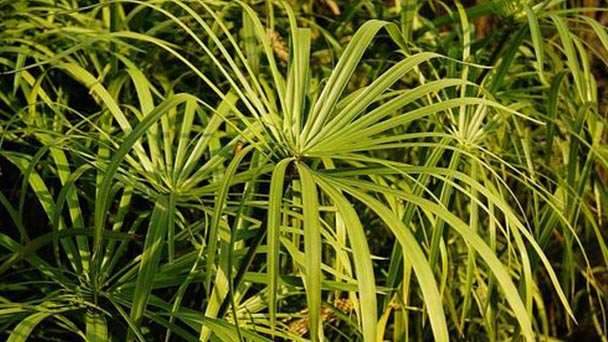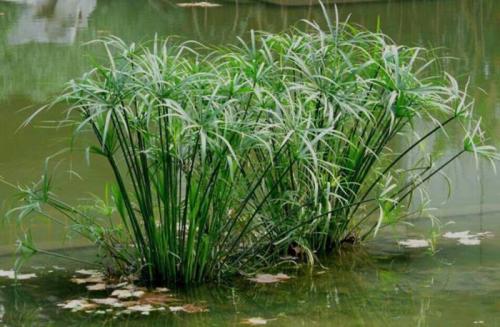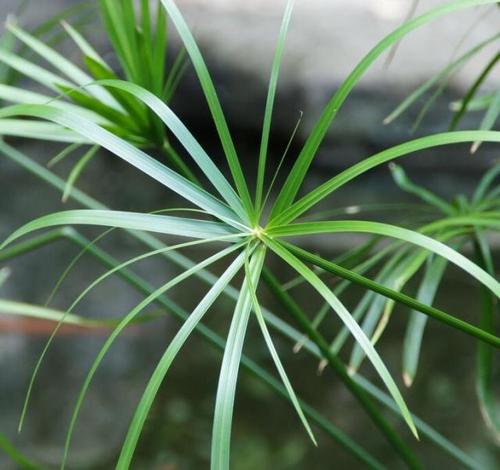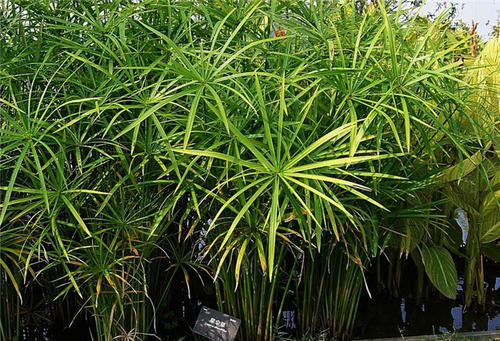Phyllostachys Heteroclada Profile
Written by Maggie
Oct 14 2021

Phyllostachys heteroclada, the fishscale bamboo, also known as "water bamboo", is a running bamboo. The water bamboo name comes from the air canals in the rhizomes and roots that allow this bamboo to grow in more saturated conditions as compared to similar species.
The whole body of the phyllostachys heteroclada lies in the industrial concept, which is not only one of the industrial materials, but also widely used. Phyllostachys heteroclada taste sweet, bamboo utensils and crafts beautiful, durable. Bamboo oil and charcoal can be produced after combustion. Bamboo oil has a strong aroma and can be used as ingredients for cosmetics. Bamboo charcoal is used for baking fire, making iron and building paint. The Phyllostachys heteroclada has many medicinal values.
Phyllostachys Heteroclada Picture

Phyllostachys Heteroclada Characteristics
Rods are up to 6 m tall, up to 3 cm thick, young with white powder and sparsely pubescent; Internodes up to 30 cm long, walls 3-5 mm thick; Culm rings are flat in thicker culms, about the same height as the sheath, but markedly uplifted and higher than the sheath in thinner culms;Ca. 5 mm in length; Branches are angled so that they are nearly horizontal. Phyllostachys heteroclada sheath is abaxially dark greenish purplish (green on slender bamboo shoots), unspotted, white pink, glabrous or sparsely pubescent, margin with white or light brown cilia; The sheath auricle is small, but clearly visible, mauve, ovate or long elliptic, sometimes short sickle shaped, fringed with several phylactery tassels. On small sheath sheath, there are only a few tassels on the tassels or on the tassels; The sheath ligule is low, slightly concave or slightly arched, margin with white short cilia; Sheaths are erect, triangular to elongate, green, greenish purple or purple, dorsal navicular eminence. Branchlets of final stage with 2 leaves, rarely 1 or 3 leaves; Phyllostachys heteroclada leaf sheath is glabrous except margin; Phyllotery, phyllotaxy mouth erect, easy to break off; The ligule is short; Phyllostachys heteroclada leaf blade is lanceolate or linear-lanceolate, 5.5-12.5 cm long, 1-1.7 cm wide, lower surface hairy at base.
Phyllostachys heteroclada cuttlefish is closely heads, long (16) 18 to 20 (22) mm, usually on the side, was born in LaoZhi, base with 4-6 pieces of a gradual increase in scaly bracts, such as in young branches at the top, are just with 1 or 2 piece spathe, at the top of the latter is ovate or long ovate leaf narrow leaves, such as on old branches spathe with cuttlefish is 2-6 pieces, paper or heavy leather qualitative, broadly ovate or more wide, but gradually to the top person is gradually narrow; They become herbaceous, ca. 9-12 mm long, apex pubescent, margin ciliate, other parts glabrous or nearly glabrous, apex with small cusps, 4-7 false spikelets in axils of each phyllostachys bract, sometimes as few as 1; Bracts of various shapes and sizes are often supported below pseudosspikelets, up to 12 mm in length, more or less membranous, dorsal with ridges, apex acuminate, apex and ridge villous, lateral veins 2 or 3 pairs, extremely fine.
Spikelets are up to 15 mm long, with 3-7 florets, upper florets sterile; Spikelets 1.5-2 mm long, rod-shaped, glabrous, apical to truncate; Glume 0-3, similar in size, shape, and texture to the lower bracts, sometimes similar to the lemma in the upper part; Phyllostachys heteroclada lemma is lanceolate, 8-12 mm long, upper or middle upper puberulent obliquely spreading, 9-13 veined, dorsal ridge visible only at upper end, apex cone-acuminate; The palea is more or less shorter than lemma, pubescent except at base; Scales ovoid by rhomboid, ca. 3 mm long, with 7 veinlets, margin cilia; Anthers are 5-6 mm long; Style ca. 5 mm, stigma 3, sometimes 2, feathery. No fruit was seen. Phyllostachys heteroclada shoot period is in May, flowering period April - August.
Phyllostachys Heteroclada Habit
The Phyllostachys heteroclada lies in the concept of warm, moist, ventilated and transparent, shade tolerance and avoiding the hot sun exposure. Light enough environment, resistance to half overcast, not cold, east China area exposed to a little protection can be overwintered. The soil requirements are not strict, with fertile slightly sticky soil is appropriate. Growing on river banks, lakeside thickets or rocky hillsides.
The Phyllostachys heteroclada lies in the warm moist and humus-rich sticky soil, with Yin tolerance but not cold tolerance, and the winter temperature not less than 5℃.
Phyllostachys Heteroclada Distribution
The Phyllostachys heteroclada originated in India, Indonesia, and was planted in the northern and southern provinces of China. It is widely distributed in the south of the Yangtze River Valley and in the wild mountainous area of eastern Hubei. The Phyllostachys heteroclada lies in the extensive distribution of the Phyllostachys heteroclada in forests, great lakes and swamps at the edge of rivers in grassland areas. Many farms along the river are planted near houses, Qichun, Huangmei, xishui and other counties are very many, often for potting ornamental or xishui flower arrangement and leaf cutting.

Phyllostachys Heteroclada Benefits
The whole body of the Phyllostachys heteroclada lies in the industrial concept, which is not only one of the industrial materials, but also widely used. Phyllostachys heteroclada taste sweet, bamboo weaving utensils and handicrafts beautiful, durable, burning can produce bamboo oil, bamboo charcoal. Bamboo oil has a strong aroma and can be used as ingredients for cosmetics. Bamboo charcoal is used for baking fire, making iron and building paint. The Phyllostachys heteroclada has many medicinal values. Phyllostachys heteroclada bamboo has good toughness, and the cultivated Phyllostachys heteroclada bamboo rod is thick and straight with flat joints, which is suitable for the preparation of various life and production appliances.The famous Phyllostachys heteroclada column in Yiyang, Hunan, was prepared with this kind of material.Bamboo shoots are for eating.
The Phyllostachys heteroclada, easy to be controlled and nourished, can be planted in water or potted, clean and elegant, slim Juan with bonsai grace.
It is suitable for desk, desk decoration, if matched with rockery stone, make a small bonsai, with natural scenery interest. South open planting, suitable for stream side, rockery, stone gap ornament. The stems and leaves of the Phyllostachys heteroclada lie in layering, delicate and natural, evergreen in all seasons. It is an excellent indoor food and good material for cut flowers.As a result, it is deeply loved by bonsai lovers.
You can grow it in a pot or in a container of water. Water method can be used lake water, river water, day water, precipitation 24 hours of tap water, it is best to electrolyze ionized water in acidic water, avoid mineral water. Several colored glass balls or pebbles can be placed in the bottle to stabilize the center of gravity and increase its beauty.

The value of purifying the environment lies in the Phyllostachys heteroclada. The removal rates of TN, TP, COD and BOD in sewage were 91%, 92%, 70% and 73%, respectively, after the cultivation of the Phyllostachys heteroclada in domestic sewage for 10 days, among which the absorption of N and P of the Phyllostachys heteroclada accounted for 55% and 53% of the purification amount respectively. The removal rates of TN, TP, COD and BOD were 64%, 47%, 74% and 74% in the subsurface wetland planted with windmill grass. Compared with the artificial wetland planted with no plants, the removal rates of TN, TP, COD and BOD were increased by 28%, 19%, 14% and 13% respectively.
It can be used to make MATS. The tenuous nature of the Phyllostachys heteroclada lies in its love of shade and moisture, and the bamboo body is especially cool due to its excellent water absorbing ability. After breaking the meel to weave the banquet, still maintained the original characteristic and the strong point. Sweat will be absorbed by the bamboo thread in the Phyllostachys heteroclada mat, and body temperature will drop along with the lie, which makes people feel the breeze rising slowly, sweat will seep into the bamboo thread, and the bamboo thread will be more warm and cool. Therefore, the heat dissipation and sweat recovery performance of the long-used Phyllostachys heteroclada mat were better, and the more you sleep, the cooler you will be. The Phyllostachys heteroclada can also be used as puzzles to cut into different shapes and lay out different patterns. In addition, the juice of the extract of the Phyllostachys heteroclada leaf can be used as a light green dye for drawing.
Latest Updated
- Benefits of Bugleweed - 7 Science-backed Health Benefits
- Bugleweed Dangers & Side Effects - Is It Poisonous?
- How to Plant Evergreen Trees - What You Should Know
- When to Plant Evergreens - Grow Guide for Evergreen Trees
- 12 Wonderful Evergreen Shrubs for Your Garden
- 12 Popular Evergreen Plants with Pictures for Beginners
- When And How To Prune A Lilac Bush Like a Pro
- How to Grow & Care for Lilac Vine (Hardenbergia Violacea)
- Japanese Lilac Tree (Syringa Reticulata) Care & Propagation Guide
- Shumard Oak Pros and Cons - What to Know
Popular Articles
- Winter maintenance of Antirrhinum Majus
- How to Grow Terminalia Mantaly Tree
- How to Grow and Care for Crossostephium Chinense
- How to grow Antirrhinum Majus in spring
- Peristeria Elata (Dove Orchid) Profile: Info & Care Guide
- Underwatered Snake Plant (Sansevieria Trifasciata) - Signs And How To Fix
- How to Care for Brazilian Jasmine Plant (Mandevilla Sanderi)
- How to Grow & Care for Graptopetalum Purple Delight in Summer
- Rosa Chinensis (China Rose): Plant Growing & Care Tips
- How to Care for Baby Sun Rose (Aptenia Cordifolia)